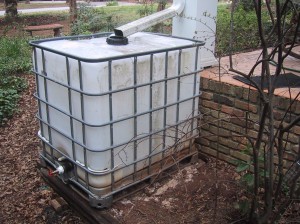This is a Fiskers Rain Barrel Diverter that you attach to a gutter downspout to fill a rain barrel.


You can buy them on Amazon . They include a flexible plastic pipe and rain Barrel adapter and are designed to be mounted on your downspout at the water line of your barrel so that they fill the barrel but do not over-fill it.
. They include a flexible plastic pipe and rain Barrel adapter and are designed to be mounted on your downspout at the water line of your barrel so that they fill the barrel but do not over-fill it.
However, I wanted to use it to top off my swimming pool with (free) rain water, as opposed to (expensive) city water. To do this, I needed to run a hose from the corner of my house where the downspout is over to my pool. As I already had several standard 3/4″ garden hoses, and they are relatively inexpensive, I decided to adapt the Fiskars provided hose (which is around 1″ in diameter) so that I could connect a regular garden hose to it.
I purchased a male hose repair kit from Ace hardware that had a barb that would fit inside the hose and multiple metal “teeth” that you would bend down over the hose to hold it on.


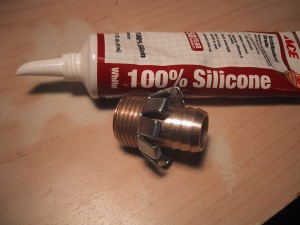
Because the Fiskars flex hose is larger than a standard garden hose, I also purchased a tube of silicon sealant, which I used to make the connection water tight. (This only works for low pressure connections, such as that near the rain diverter). I widened up the teeth so that they would fit over the fiskars hose and surrounded the bottom with silicon sealant.
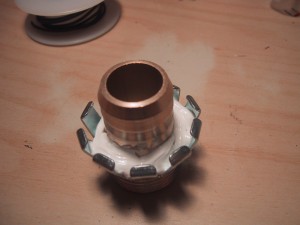
The fiskar’s house has ridges. I recommend getting the teeth of the male hose end over THREE ridges, which will hold the end of the flex hose into the silicon seal very tightly. Getting it over TWO ridges is easy, but you will have to squeeze the flex hose, latch one side under the teeth, then use a screwdriver to push the third ridge under the teeth on the other side, while tightening the teeth using a pipe wrench or vise.
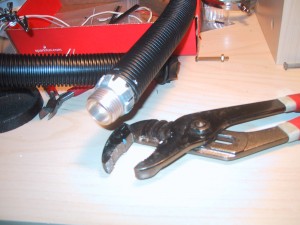
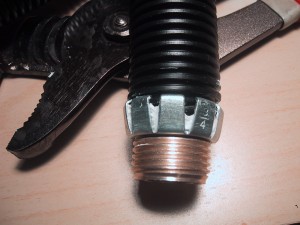
Because I wanted to get as much water as possible into the pool, I mounted the Fiskars Diverter Pro about seven feet high on the downspout. This way I would have several feet of “head” to drive the water down the hose and along the ground to my pool.
